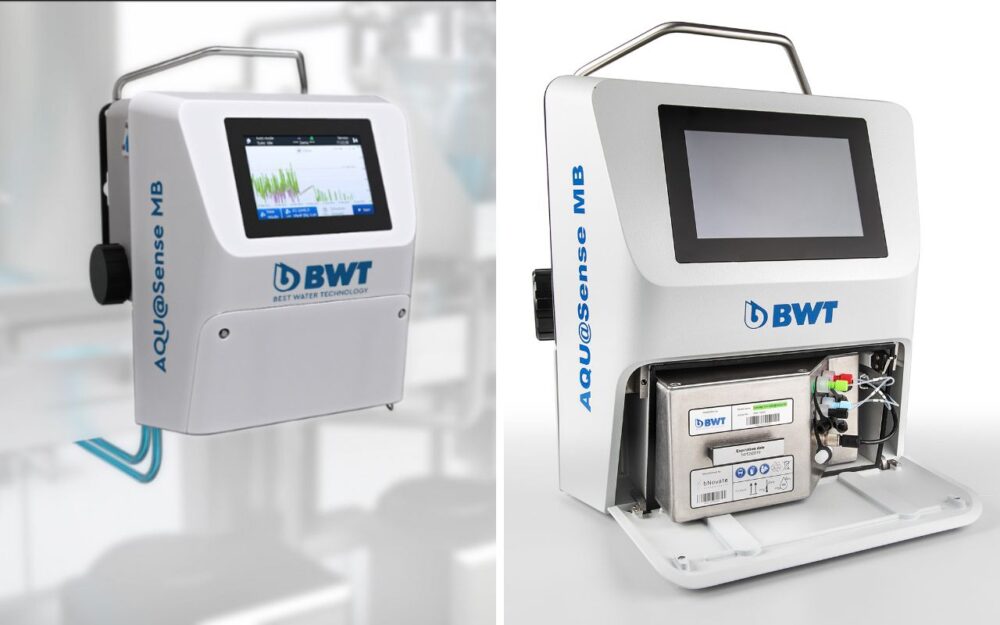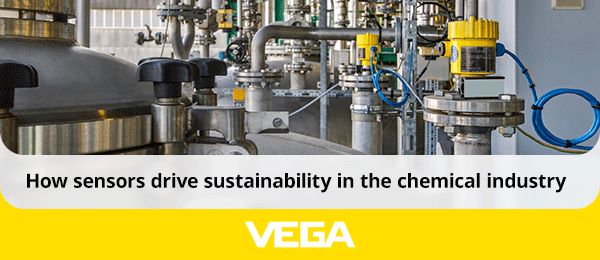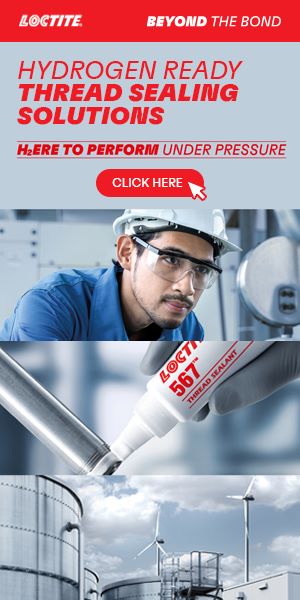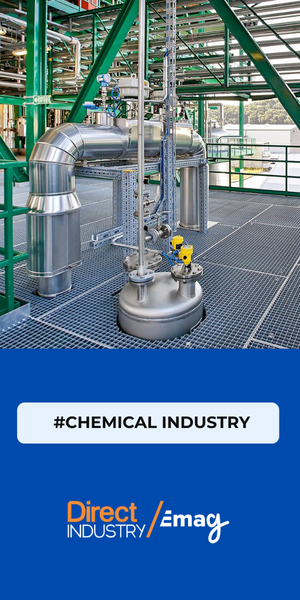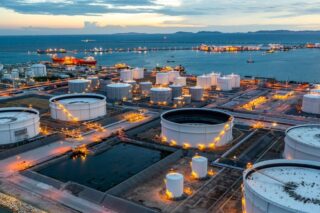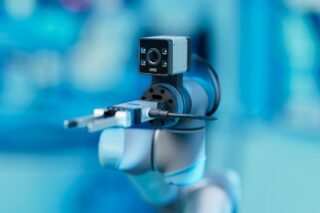In the highly regulated market of pharmaceutical water treatment, every technological evolution must reconcile performance, safety, and compliance. In 2017, the Austrian group BWT, in partnership with the Swiss start-up bNovate, introduced Aqu@sense MB. This online microbiological analyzer capable of measuring in real time the bacterial load of purified and injectable waters. The company received primary validation, the official endorsement from the authorities to use this process, in 2023. Spotlight on this innovative technology, still rare in the sector, but offering highly promising prospects.
This innovation could revolutionize the entire pharmaceutical sector and the microbiological control of water used for injectable solutions such as vaccines. Until now, manufacturers had to wait several days to obtain the results of a microbiological test. Aqu@sense MB changes the game. This instrument delivers a complete analysis in less than 30 minutes, while eliminating the biases linked to manual sampling.
This innovation is part of BWT’s broader strategy: to support the transition from thermal processes to membrane technologies, which are more energy-efficient while maintaining the highest standards of microbiological safety.
A Regulatory Change That Started It All
It all began with a regulatory shift in several countries. In 2017, the European Pharmacopoeia profoundly changed the rules of the game for membrane technology. Until then, water for injection (WFI) had to be produced by distillation, a thermal method ensuring the absence of microbiological contamination. But the revision of the standard opened the door to cold membrane technologies, which are more compact and energy-efficient.
While Europe took the step in 2017, the United States has only recently updated its regulation this year. The Chinese Pharmacopoeia has also already made this possible.
However, this evolution came with some concerns. The European Medicines Agency (EMA) published a document listing its “main concerns,” among which the million-dollar question stood out: without the thermal barrier of the distiller, how can microbiology be controlled in a now cold system?
BWT, a European pioneer in pharmaceutical water treatment, had just launched its Osmotron range, based on membrane technology. And the company knew that pharmaceutical manufacturers would only adopt these systems on one condition: being fully reassured about continuous microbiological control.
As Pierre Cullmann Pharma & Biotech Market Manager at BWT France, an expert in water treatment, puts it:
“Microbiology is the constant source of stress for the pharmaceutical manufacturer. And when we launched this membrane system, we said to ourselves: manufacturers will never adopt it…unless we reassure them about microbiological control.”
BWT therefore partnered with bNovate, a specialist in online microbiological analysis for drinking water, to co-develop an online microbiology analyzer for water treatment plants. Every stage of the process can be monitored in real time, without relying on slow and error-prone manual measurements.
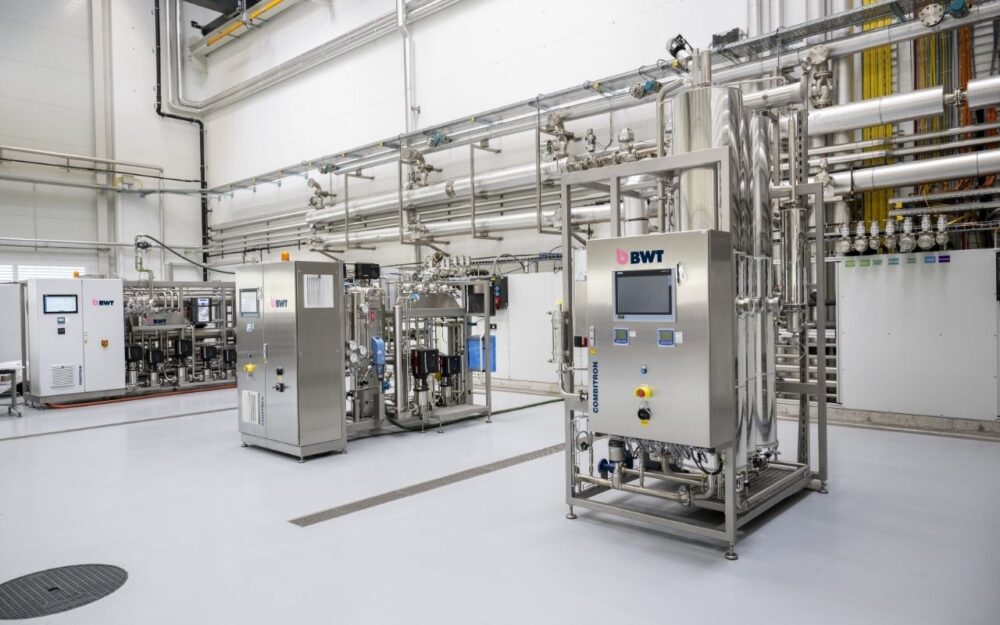
The Rolls-Royce of Microbiological Analysis
Purified water is not sterile. It always contains a natural bacterial population. What matters is the stability of that population. Aqu@sense MB, based on the principle of flow cytometry, “the Rolls-Royce of microbiological analysis and reliability,” according to Pierre, enables this rapid, automated microbiological analysis.
The device automatically samples water from the loop, then injects two fluorescent markers targeting bacterial DNA: SYBR Green, which penetrates all intact cells and stains their DNA, and propidium iodide, which cannot pass through intact membranes and serves as an integrity marker.
After a short incubation period (about 20 minutes), the sample is analyzed by a laser that distinguishes living cells (green fluorescence) from dead cells (red fluorescence). The result is an Intact Cell Count (ICC), a precise, quantitative count of viable bacteria in the water.
“It gives you a population profile, the bacterial load and its evolution every 30 minutes. If you measure every two hours, or three to four times a day, you get your water profile and know exactly how the microbiological load is trending.”
The entire cycle — sampling, staining, and measurement — takes less than 30 minutes. And everything is automated.
By comparison, the traditional culture method on Petri dishes relies on manual sampling: operators sterilize sampling points, collect water, and send it to the lab, which takes five days to produce results and detects only 0.1 to 1% of the actual bacterial population.
With Aqu@sense MB, manufacturers can now track the microbiological load trend throughout the day and set personalized statistical alert and action thresholds.
Reliability, Automation, and Regulatory Validation
To convince a naturally conservative pharmaceutical sector, BWT and bNovate submitted Aqu@sense MB to primary validation according to pharmacopoeial standards. This process requires proof that the technology is at least equivalent, if not superior, to reference methods in terms of accuracy, selectivity, robustness, and reproducibility.
The result: Aqu@sense MB is now the only online microbiological analyzer to have obtained this primary validation — an essential milestone, since without it, no new indicator can be integrated into a pharmaceutical laboratory’s quality system (QP1, QP2, QP3).
Read also
Measurable Environmental and Economic Benefits
Beyond product safety, Aqu@sense MB paves the way for major environmental gains. Until now, purified water loops were disinfected weekly using steam, ozone, or electric current. Now, manufacturers can demonstrate with data that no microbiological proliferation occurs, allowing them to space out disinfections to every two months or even longer.
“With this kind of analyzer, a pharmacist can tell an auditor: I’m going from one disinfection per week to one every two months, because I have an indicator that tells me the microbiological load in near real time — and it hasn’t changed at all, for example.”
Fewer disinfections mean less energy consumption, greater system availability, and a smaller carbon footprint.
From a quality perspective, continuous analysis also reduces the number of manual samples — each costing between $60 and $90 according to the ISPE — while strengthening the confidence of the Qualified Person (QP). They can now monitor microbiological quality live and, eventually, release production batches faster and more confidently.
A Technology for the Future Already in Use
Today, six to seven major global pharmaceutical groups have already installed Aqu@sense MB at their sites in Europe, Asia, and America. All are collecting real-world data to refine thresholds and validate industrial use.
“It’s not yet the standard, but it’s clearly the future,” says Pierre. “It doesn’t make sense not to use it compared to something uncertain, incomplete, and prone to false positives. A continuous, more reliable, and automated measurement will inevitably replace a slow, uncertain manual method.”
And he adds:
“When a responsible pharmacist sees in 30 minutes that their microbiological load is stable, they sleep better at night.”
With Aqu@sense MB, BWT and bNovate are laying the groundwork for a paradigm shift: moving from post-control to continuous, predictive monitoring. Yet, this new technology may still take about a decade before becoming the industry standard.
Read also
